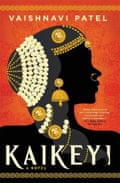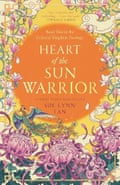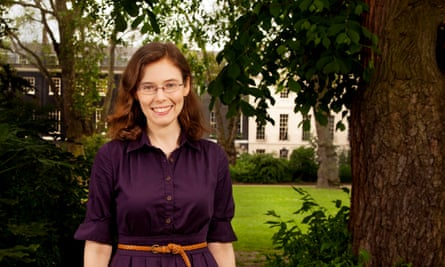From Circe to Medusa via Persephone, Electra and the women of Troy, it seems there are few characters from Greek mythology left who haven’t been the subject of a feminist retelling in recent years. This year, the world of such reimaginings is expanding beyond the Greeks – although there is a clutch of those retellings, too – with the publication of books about Julia from George Orwell’s Nineteen Eighty-Four (Katherine Bradley’s The Sisterhood), Rosaline from Shakespeare’s Romeo and Juliet (Fair Rosaline by Natasha Solomons) and Morgan le Fay from Arthurian legend (Sophie Keetch’s Morgan Is My Name).
And that’s just the tip of the iceberg. Looking at the number of books still to come – from Bea Fitzgerald’s Girl, Goddess, Queen to Jennifer Saint’s Atalanta – and those that have been released in the last couple of years, it seems there’s no end to these retellings. But are we close to reaching saturation point? And if a story is simply being retold, is there any creativity involved?
Authors are firm in their conviction that these books will not go out of fashion, with Fitzgerald saying “it would be egotistical to say the publishing market could exhaust them”.
Emma Herdman, Circe author Madeline Miller’s editor, says she always thought trends for genres such as psychological thrillers or up lit might shrink but still sees “so many submissions” in those areas.
“There will always be an appetite for a retelling that offers us a new way into thinking about how we live today, for a retelling that’s beautifully written and has emotional perspicuity,” Herdman adds.
But, she points out, “if the area is to actively grow it has to diversify” – the space so far has largely been focused on western mythologies. There have been a small number of retelling stories from other cultures, including Vaishnavi Patel’s Kaikeyi, which reimagines the life of the queen from the Indian epic the Ramayana, and Sue Lynn Tan’s Daughter of the Moon Goddess and its sequel Heart of the Sun Warrior, which are inspired by the myth of the Chinese moon goddess Chang’e. Tan says that for myths “that are less well-known, beyond the country of origin, retellings can introduce the culture to more readers”.
after newsletter promotion

“It has been wonderful to see the increasing wealth of retellings, especially the diversity in stories from other cultures including Chinese, Indian, Middle Eastern, Korean and Japanese,” she adds. “I believe we are far from a saturation point, if it even exists. There is so much possibility, particularly for diverse retellings, those based on stories that might be lesser known beyond their country but hold as much magic and wonder.”
Detractors of retellings might argue that there is an unoriginality about them, but writers point out that myths and legends stem from a culture of oral storytelling, where tales were told over and over, each iteration bringing something new.
Solomons says the stories being retold now will be “retold again” in 20 years. “It fits in with this great literary tradition, this great oral tradition. So I don’t think it’s a fad. It goes back to the very beginnings of storytelling. This is what we do, we tell stories again and again and we change them according to our needs.” She adds that Shakespeare’s work was “run through with the Greeks”, and that the “Greek myths in themselves are retellings”.

Tan agrees: “Books could delve into the same myth and yet be completely different – no story is ever the same with each writer bringing a new perspective, creating a different world and characters, or choosing to highlight a different element of the tale. The female perspective has become more valued – story, regardless of genre, now rightfully reflects that.”
Herdman says: “We often fall back on stories as a way to help us better understand the world and how we behave in it – thinking of religious texts, fairytales, even family narratives that help us construct our own identity.”
“I wonder if employing the comfort of a story that’s already known as a jumping-off point to explore contemporary ideas makes contemporary debates more accessible,” she adds, “offering readers an easier way in to discussing today’s politics – particularly the politics of being a woman.”
Myths often posit women as secondary characters with less agency than their male counterparts, says Tan. “While the exploits of the heroes will likely have been recounted before, shining a spotlight on the women in the tale could offer a different perspective to the same legend, breathing new life into it. And it might shine more light on the emotional heart of the tale.”
Bradley said teaching Nineteen Eighty-Four in lockdown to her students “meant it took on a new resonance”, and she noticed new aspects of the story. “The first was how silent Julia is as a character,” she says. “No surname, no clear job or friends – she is a mystery. She laughs when Winston Smith says he wants to ‘rape’ her and ‘smash’ her head in and I found the restricted viewpoint of this woman interesting. Did her laughter suggest she was as limited as she presented or was it concealing her perspective – and why? That became the start of the idea for The Sisterhood.”
Meanwhile, Solomons describes writing Fair Rosaline as “imagining it like a ship, where above the surface you’ve got Romeo and Juliet, and underneath is what I’m writing, but it has to match perfectly”.
Authors of retellings acknowledge they owe a debt to the original creators (Bradley says “it wouldn’t be right not to fully respect every aspect of Orwell’s work” while Solomons says she wanted her Rosaline to “feel like a Shakespearean woman”), but they are firm that there’s creativity and originality in their work. “Fair Rosaline is a complete work in its own right”, says Solomons. “On the other hand, what I’ve done in itself feels very Shakespearean because in the Renaissance they had different ideas of creativity and originality.”
“If you look at Anthony and Cleopatra, so much of it is just taken from Plutarch”, she says. “Shakespeare rewrites whole speeches and he takes something that is beautiful and elevates it.”
“I think retellings are always going to be around,” says Keetch. “It will ultimately always depend on readers and their appetite for things.”
And that appetite seems to show no chance of waning just yet.

